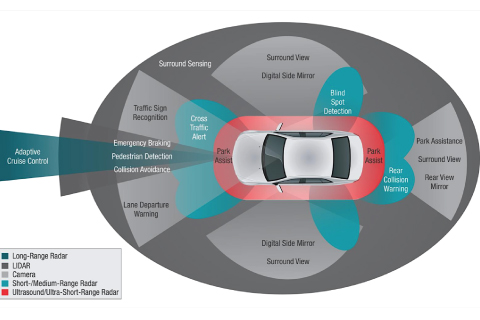As the Off-road Market Ramps Up From Its Annual Winter Lull, Expect to See a Broader Range of Enthusiasts Hitting the Trails
By John Stewart
Most businesses serving off-road enthusiasts and outdoor recreationalists will recognize the core characteristics of the current marketplace as consistent with the past years, even decades. That said, evolutionary variations, a few headwinds and emerging trends will shape the off-road marketplace later in 2024 and beyond.
The big picture is largely positive. Andy Morgan, senior director of marketing for
Keystone’s specialty automotive division, notes that, “Specifically in the truck and off-road space, what we’re hearing from the market is that business is good. There continues to be some concern about if that will continue—inflation, election year and all the normal year-to-year type stuff. But overall, business is pretty healthy.”
Keystone is a specialty distributor that services a wide range of resellers, including independent jobbers.
“We’re seeing very good results, and we’re hearing very good feedback about customers being busy,” Morgan continued. “There does tend to be some difference in the different product types, where there are some puts and some takes. But the suspension business is very healthy for us, wheels and tires—all those customers report very healthy traffic and business so far. We’re hopeful and optimistic that remains in place.”
Manufacturers are reporting that overall demand trends remain consistent with patterns seen in the past, in which the off-road market takes a breather in the winter months and ramps up in the spring. “We’ve seen a little softening from Q4 that has carried over into early Q1, which is not uncharacteristic,” said Matt Reasoner, regional sales manager for RealTruck, a manufacturer with a dealer network of more than 12,000 businesses and OEM partners. “We are now emerging from the winter lull, and show season is in full swing. Early indicators are that things are picking back up.“
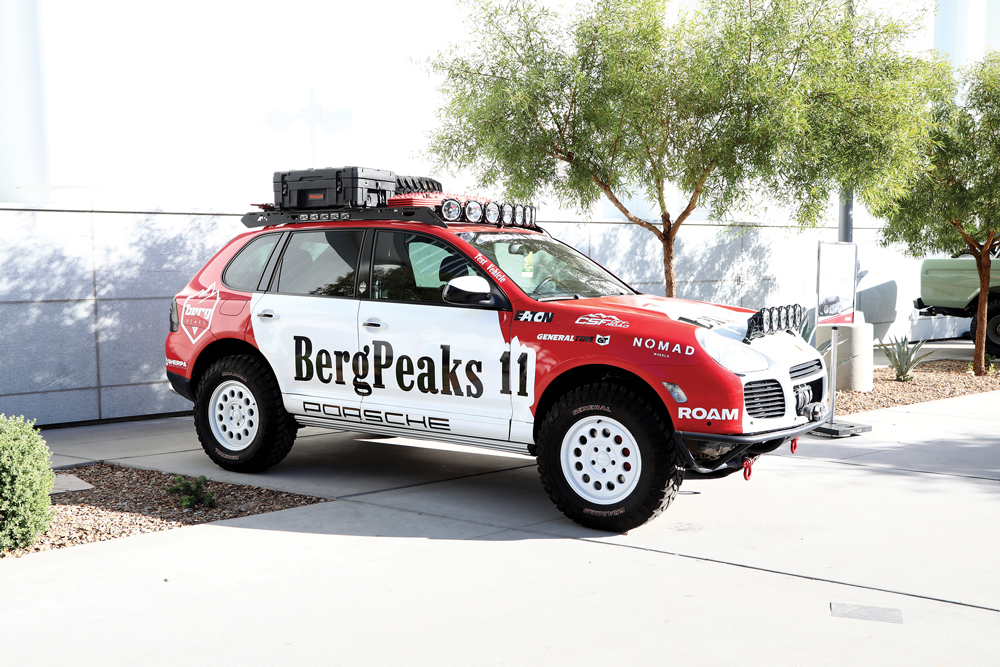
On the retail front, coming out of the COVID pandemic the business seems to have settled into a new normal.
“I feel like the pandemic, overall, for our specific market was huge. The only reason you weren’t seeing growth was because you didn’t have the volume because of the availability of the parts,” said Tara Thompson, general manager of Dixie Offroad, a brick-and-mortar retailer located in St. George, Utah, since 1994. “Now I’m seeing a little bit more of a shift where we’re not seeing as many big builds, full builds—maybe just a lift and tires, keeping an older vehicle and doing some upgrades. It’s been like that for about the past year,” she said.
These days, the consensus is that supply issues are diminishing.
“I think generally supply chains are much better,” Morgan at Keystone said. “And that’s what we’re hearing from our [manufacturer] suppliers. Supply is a bit more reliable, costs are a bit more stable, and they continue to introduce new products, innovate and release new things that they think the market is looking for. So for the most part, generally positive feedback from the supply base.“
New-vehicle sales rates are a factor in the off-road market—some vehicles more than others. It’s Jeep and Toyota, particularly the Tacoma, that are driving the market. But there are other players starting to pop up, including CUVs and off-road-ready pickups. Bronco is a growing factor, but it’s still early in the cycle.

“Jeep Wranglers are still by far the most accessorized vehicles on the road,” Reasoner at RealTruck told us. “We also see that Wranglers continue to be accessorized over the lifetime of the vehicle as owners opt to update/refresh the look, or the second owner—or third, fourth—adds new modifications. We don’t see this trend nearly as much in the truck market,” he said.
On the truck side, “With the growing popularity of overlanding, we’ve seen the Tacoma emerge as a key player in that space,” Reasoner continued. “They are relatively affordable, offer decent off-road capability right from the factory and their midsized footprint makes accessing trails less cumbersome than a fullsized rig.”
Vehicles in Operation (VIO) registration data supplied by SEMA Research shows that, as of early 2024, there were more than 3.5 million Jeep Wranglers and more than 4 million Toyota Tacoma pickups on the road. At that time, there were just over 241,000 Ford Broncos registered.
“We’re not seeing the Bronco trend carry over regarding accessories,” reported Reasoner. “I think the Bronco market will come into its own, but will take some time as more product options become available. The industry expected it to follow the trajectory of the Jeep Wrangler—and that hasn’t been the case so far.”

While it may be early for Bronco to have a big impact, overall the Ford product is still a promising development that may be bring in new types of customers. Regarding Bronco, Morgan told us, “It feels pretty similar to Jeep, as far as percentage of ones that have modifications. But with the suspension and the way they have that set up, they drive so nice and that has drawn a more non-enthusiast-type owner that just likes a cool, rugged vehicle. So we’ve seen quite a bit of business there.”
SEMA Research has noted that crossover utility vehicle (CUV) sales are increasing, and that opportunities for accessorization could grow there. Indications are that as time goes on, more CUVs are turning up on the trails and campgrounds.
“You see them a lot more on the trail, where people really like this idea of a Tacoma, but don’t need this much payload, don’t need true four-wheel-drive, but want better fuel economy,” said Sean Holman, OVR Magazine editor-at-large. “And now some of the accessory manufacturers are starting to listen. “We used to call them ‘softroaders’ but they’re becoming a meaningful part of it.” He puts the Jeep Renegade, Jeep Trailhawk, Rav4 Adventure, the Subaru Crosstrek and Outback among the CUVs relevant to the off-road market, with more to come. “Hyundai and Kia are now flirting with that at the auto shows,” he said. “Everybody wants a piece of that space; everybody wants to be Jeep.”
Although not all that many CUV owners are showing up at off-road shops and stores as yet, it appears that these vehicles may bring the benefit of a new type of customer to the industry.
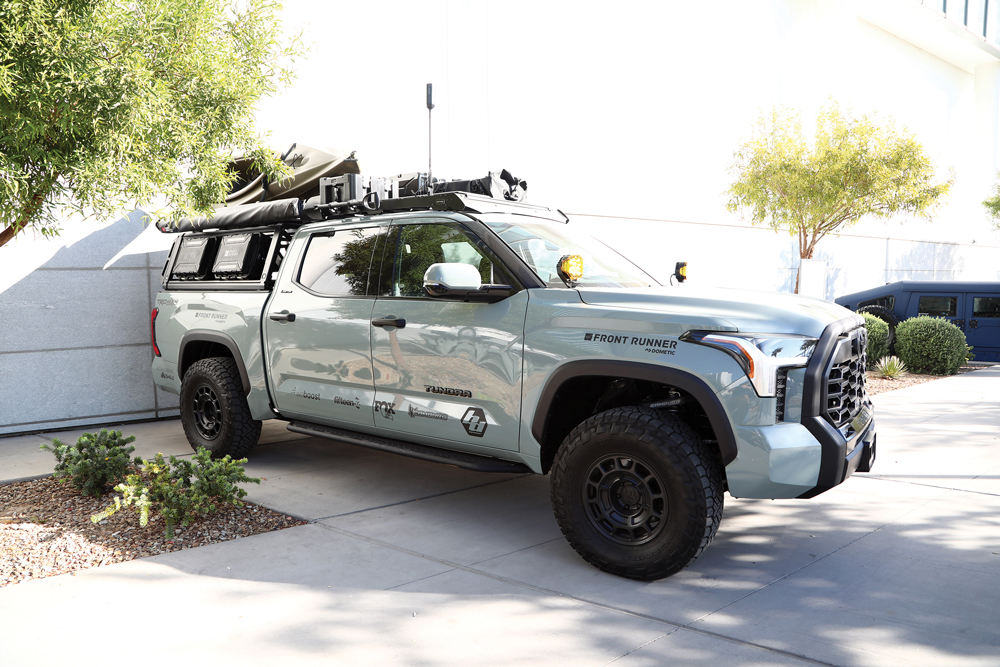
The CUV owner, Thompson noted, is “Definitely more of a road-trip-type person, likely to head off on a weekend,” Thompson mused. “The car is an avenue for other recreation; for the Jeep owner, the drive is the recreation.”
Another variation on the classic off-road customer is the long-range, adventure travel enthusiast now known as “overlander.” While enthusiast 4x4 owners have long been camping and sleeping in their trucks to attend off-road races in Mexico or at favorite campgrounds, the overlanding trend has taken self-contained off-road travel to a higher level. Sources cite the popularity of the Toyota Tacoma, and Toyota products in general, in tandem with the growth of the overlanding trend.
“With the growing popularity of overlanding, we’ve seen the Tacoma emerge as a key player in that space, noted Reasoner. “They are relatively affordable, offer decent off-road capability right from the factory and their midsized footprint makes accessing trails less cumbersome than a fullsized rig.”
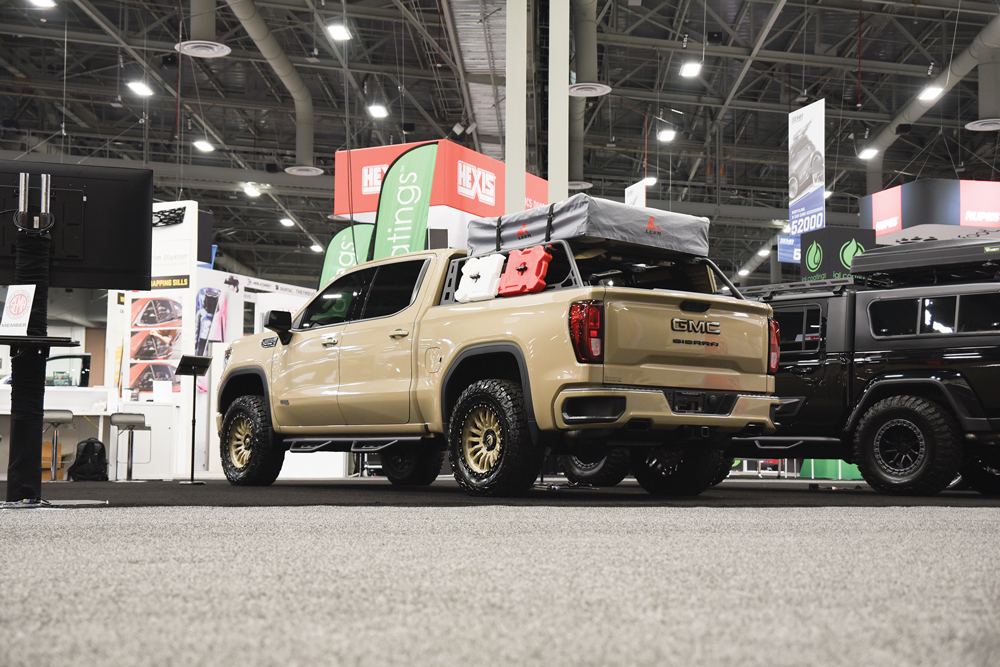
Considering why Tacoma has conspicuously benefitted from the overlanding phenomenon, Holman said, “Obviously, the pandemic gave people the inclination to look at new ways to go recreate with the family and get out of the house. And Toyota didn’t have as much of a [pandemic supply] shutdown as the others,” he said. “So the fact that Toyota moved into that higher, off-road-centric off-road package before anybody else was in that space, they commanded it.”
From a manufacturer point of view, the trend is positive. “The overlanding segment has proven that it is not a fad and is indeed here to stay,” Reasoner told us. “What once was somewhat of a niche market has now found its way to the mainstream. More and more manufacturers are making racking systems for the rooftop or above the truck bed, but that’s just the start. Functional storage and mounting options are a huge focus for manufacturers as consumers continue to look to get the most out of every bit of space their vehicle has to offer.”
Morgan at Keystone agrees, while noting that the growth curve may be leveling off. “We still see some holdover from the COVID era, where there might be a little bit of a hangover,” he said. “With some of the overlander [customers], I’d say there is a little bit of hesitation, where dealers are not stocking at the same rates. They’re servicing that market and they think that demand is there—but there is maybe a little bit more hesitation that maybe that space, which was such a big growth space for a couple years, has slowed down to some extent,” he said.
Another factor in the off-road market is the growing presence of factory off-road packages available at dealerships as OE manufacturers increasingly offer trail-ready versions of their new models. It’s a trend that retailers have begun to feel. “The hard part is with the Jeep market, it’s changed so much, where you don’t have to do
nearly as much to fit the tires on it anymore,” Thompson said. “So we’re seeing people not do as much to them to get them to the point that they want. And that cut a lot out of our bread and butter.”
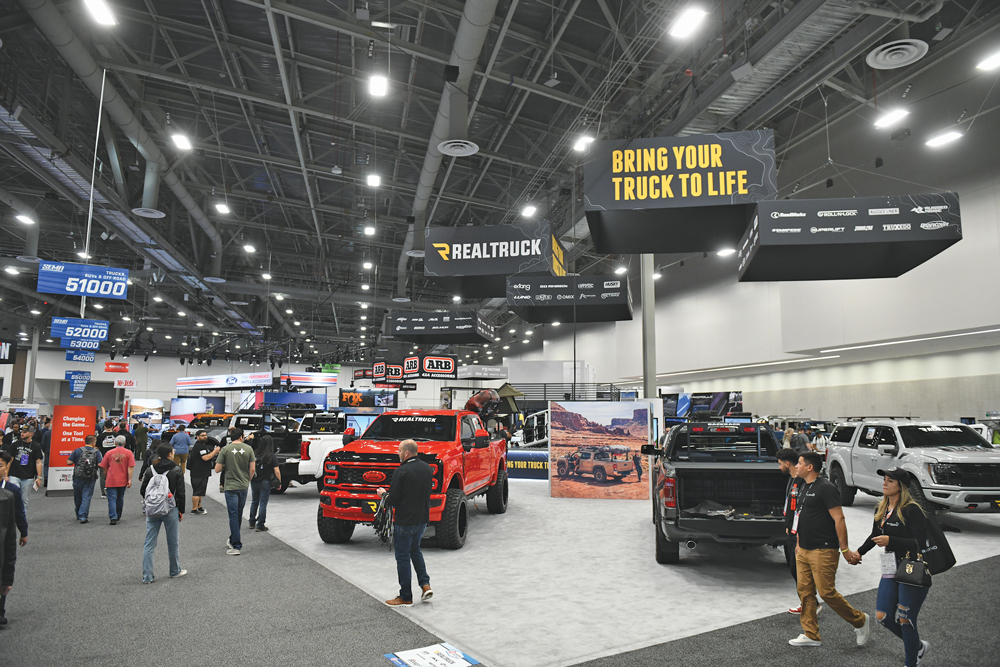
But it’s not just Jeep offering trail-ready performance packages. “Off-road packages,” Holman noted, “obviously led by [Wrangler] Rubicon when it came out—you’ve got Ford F-150 Tremor and Raptor, Ram TRX, Colorado Bison and Chevrolet Silverado ZR2, that all have quite a high level of capability.”
For some OEM companies, the foray into off-road performance represents a dramatic change in brand strategy.
“Look at GM,” Holman said. Historically, “GM never co-brands with anybody. At Ford, you’ve got Harley-Davidson, Eddie Bauer, Bill Blass—whatever. But look at Chevy, they never really did that. So for them to partner up with AEV, to go after TRD Pro, or what will become the Trail Hunter, is a pretty big move for a company of that scale and size. Their brand
is actually better served in partnership with another brand.”
Concern about OEM off-road-packages, according to Morgan at Keystone, “comes up a lot. I do think that has some impact, and I do think from the customer side there is concern, because it feels like they are taking business away from them.“ But the effect is not necessarily negative overall. “We feel like that helps grow the world of what’s out there, and helps get those brand names in front of consumers that might otherwise see them. So we think it helps the overall sales and that the more people that want to customize their vehicle, the better it is for everybody.”
Not to be ignored in the off-road market is the effect of consolidation, which can create headaches for retailers and wholesalers.
“At the shop my biggest X-factor right now is the amount of companies buying companies,” noted Thompson. “It’s not knowing who is going to be around, what brands you’re going to be loyal to, who you can count on to be there. Good or bad, I don’t know, right or wrong, I don’t know—but it’s a shock.”
Morgan told us, “We hear the same thing from a lot of customers. They say there is a lot of uncertainty—if their favorite brand is going to be supported the same way, or if it is going to come out with innovation and the new and improved features they are looking for. There can be some concern over that.”
In the long run, the consensus is that the consolidation trend is not all bad. “Generally, I don’t think it has a hugely negative impact on the business,” Morgan said. “Certainly you’re going to lose some things that were very promising and helpful, but it’s a fact of life. We have to try to do the best we can to make sure that we understand where the products and where the brands are headed and what the vision for the brands might be post-acquisition so we have a way to manage appropriately.“
THE GROWING REACH OF OFF-ROAD RACING
Off-road racing is alive and well in 2024, with sanctioning bodies geared to engage the top professional race teams and sportsman racers alike. Most recently, multi-level marketing and live streaming of major events has been a big factor in bringing off-road racing to broader, often international, audiences.
“It’s just different times,” said Jim Ryan, vice president of marketing and sales for SCORE International. Back in the day, Ryan said, “The racing organizations, their job was to put on the race and the story. And it was then for the media and the sponsors to promote it,” he said. “And now there are the social-media channels, the television packages, and we also produce the monthly magazine SCORE Journal. But now the live stream thing is the big, big deal,” he continued. With social media and live streaming, “we have a global audience, global racer base, global media coverage—all of that.”
According to Ryan, the 2023 SCORE Baja 1000 generated “media coverage from about 18 countries and racers from 30-something states, it just blew off the charts this year, probably the biggest we’ve ever had.”
While there are numerous opportunities for sportsman racers to participate in desert racing, and sometimes dice with the professionals, these days the SCORE series attracts mostly professional racers from around the world. The SCORE organization has more than 50 classes on the books, and for any given race, 28 to 30 classes are staged. The top classes require well-organized teams with deep pockets able to field pit crews and chase teams along the entire length of Baja.
“The trophy trucks are million-dollar-plus entities now,” Ryan said. “Not 100 grand. So it’s a totally different dynamic. We’ve had teams from the WRC, F1, NASCAR, IndyCar guys—you name it. They show up from time to time because this is the last thing that they want to do, and it is so unlimited.“
Sponsors are attracted to off-road racing for a variety of reasons. Brand recognition among enthusiasts is primary, but there are other compelling reasons to be involved. “They’re using us for product development,” Ryan explained. “We’re a technology development center. I mean, if they can get through us, they know their products are good, whether it’s trucks, buggies, bikes, the ATVs.”
Companies like Can-Am, Polaris and Yamaha are now highly visible at SCORE races. “There’s still factory teams being supported, and it grows,” Ryan said. There are now six classes for UTV racers at SCORE, when originally there was just one.
Another highly visible race event, King of the Hammers, has developed into a multi-week off-road racing festival, spawning new classes of race cars, even new race series, such as Ultra4.
“King of the Hammers is a real deal,“ said Ryan. “It’s not our market, but it’s become like race week. For set up and tear down for those guys out there, it’s almost three weeks now… And it definitely has crowds. It definitely gets some numbers,” he said.
Sportsman racing in the Southwest is complicated by permitting in Western states, but legacy race routes are still in use, and sanctioning bodies tailored to vintage and entry-level racing are still successfully providing a path for driver advancement and enthusiast recreation.


